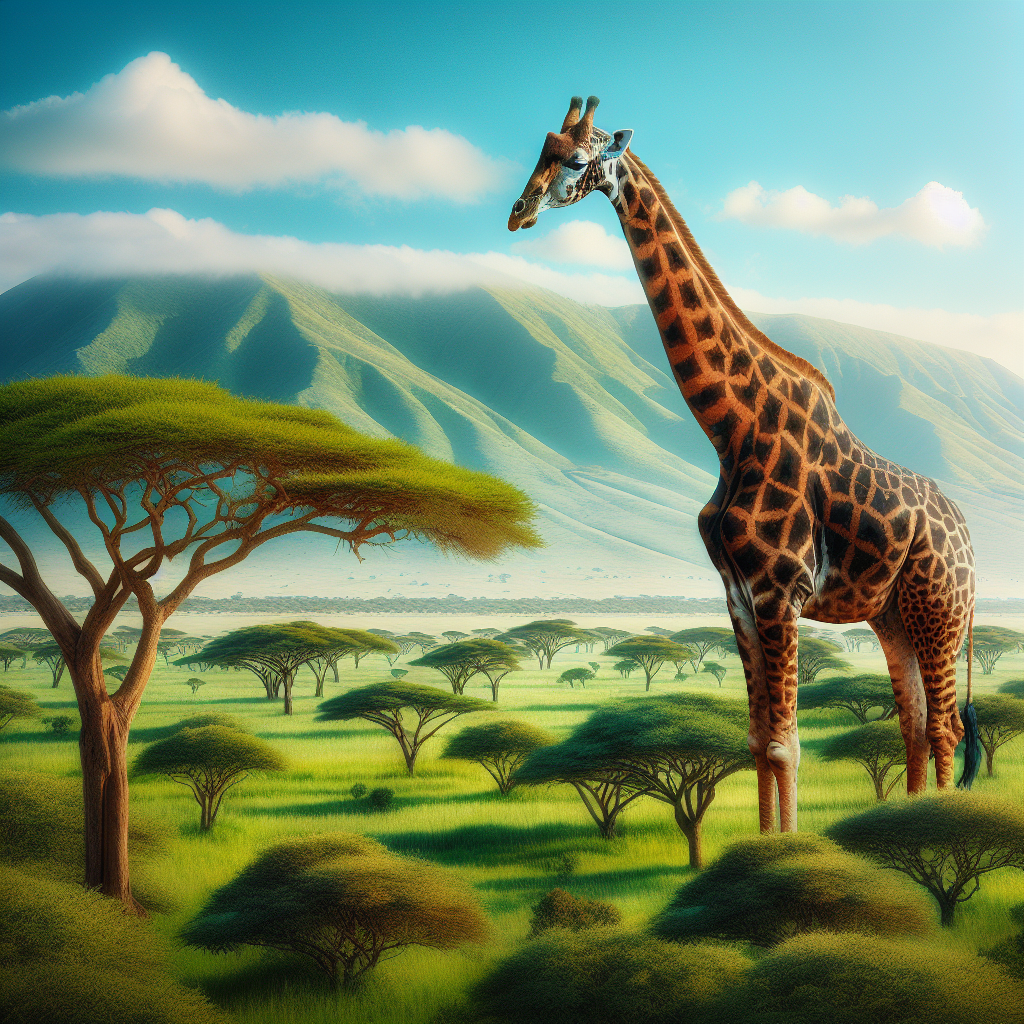Towering Above: The Fascinating World of Giraffe Behavior and Ecology

Towering Above: The Fascinating World of Giraffe Behavior and Ecology
In the intricate tapestry of the African savanna, where the sun casts its golden rays over sprawling grasslands and acacia trees, the giraffe stands as one of nature’s most captivating masterpieces. With their impossibly long necks, curious faces, and elegant gait, giraffes have long fascinated both scientists and nature enthusiasts. But beyond their physical allure, giraffes possess a richly complex behavioral ecology that continues to intrigue researchers worldwide.
The Biology of a Gentle Giant
Giraffes, scientifically classified under the genus Giraffa, are the tallest terrestrial animals on Earth, with adults reaching heights between 14 to 19 feet. This impressive stature primarily aids in their browsing diet, allowing them to reach foliage in tall trees that other herbivores simply can’t. Contrary to popular belief, it’s not the abundance of leaves but rather their nutritional content, including calcium and magnesium, that draws giraffes to particular tree species such as the acacia.
Social Structure and Behavior
One of the most compelling aspects of giraffe ecology is their social behavior. Historically considered asocial, giraffes are increasingly recognized for their dynamic and fluid societies. They tend to form loose aggregations marked by a fission-fusion dynamic. This means that groups change composition and size frequently, a strategy likely evolved to cope with the variable availability of resources and predation pressures.
Matrilineal groups are common, where adult females and their offspring form the core of giraffe societies. Adult males, on the other hand, often lead more solitary lives or form temporary bachelor herds. These arrangements are constantly shifting, with individuals joining and leaving groups with little overt conflict.
Communication and Interaction
Giraffes primarily communicate through visual and tactile cues. They are notably quiet animals, although recent studies reveal they might produce infrasonic sounds—a frequency below the threshold of human hearing—to communicate over long distances. Necking, a behavior unique to males, involves swinging their heads and necks in powerful arcs against each other and is a competitive display that establishes dominance and access to mates.
Ecology and Adaptations
Adaptation is key to the giraffe’s survival in the vast expanses of Africa. Their striking coat patterns, which vary between subspecies, serve as a form of camouflage amid the dappled light and shadows of their environment. Their unique cardiovascular system is a marvel in itself; a powerful heart pumps blood up their long necks, maintaining blood flow to the brain without causing damage or fainting when they bend down to drink.
Conservation and Challenges
Despite their widespread appeal, giraffe populations face significant threats. Habitat loss, poaching, and climate change have contributed to a concerning decline, prompting conservationists to sound the alarm. Several subspecies of giraffes are now listed as vulnerable or endangered. Efforts by organizations such as the Giraffe Conservation Foundation focus not just on protecting these animals, but also on understanding their ecology to inform effective conservation strategies.
A Future for Giraffes
The giraffe is more than just a symbol of Africa; it is an integral component of its ecological communities. As researchers continue to uncover the complexities of giraffe behavior and ecology, the importance of preserving these gentle giants becomes ever more clear. By maintaining the natural habitats they depend on, supporting community-led conservation initiatives, and fostering global awareness, we can hope that future generations will continue to marvel at the sight of giraffes gracefully traversing the savanna, towering above, in all their majestic glory.
In understanding and valuing the giraffe’s place in the ecosystem, we ensure a future where these magnificent creatures are not only remembered for their beauty but celebrated for their vital role in the natural world.